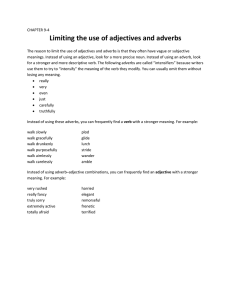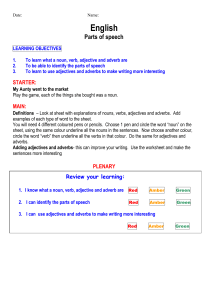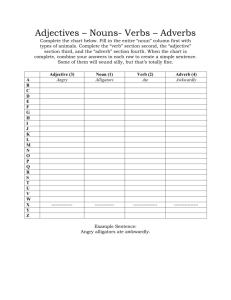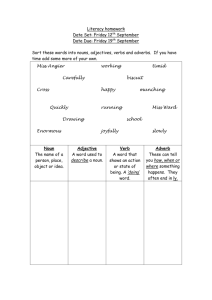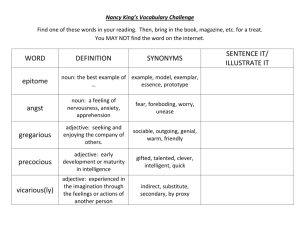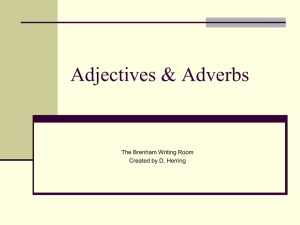Adjectives Definition: An adjective gives more information about a noun
advertisement
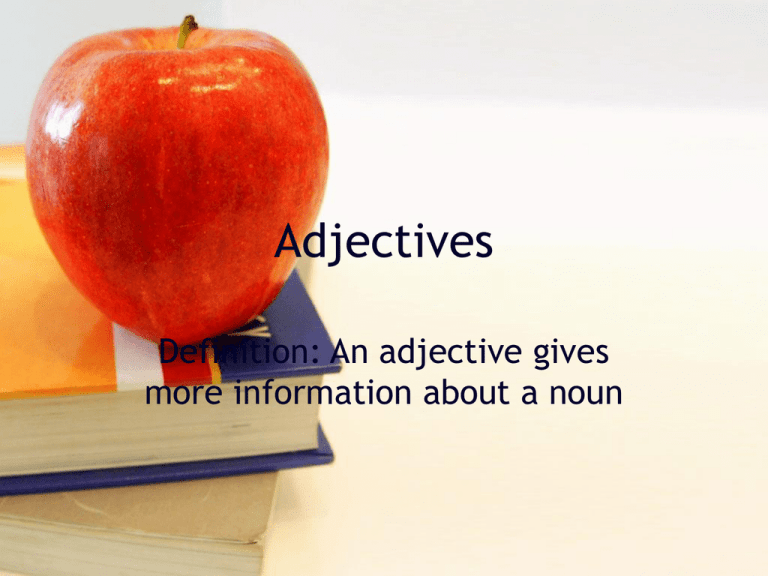
Adjectives Definition: An adjective gives more information about a noun Position of adjectives • Two main positions: > in front of a noun: He had a beautiful smile. as the complement of a non-action verb (be, look, seem, appear, smell, or taste): I’m cold. This house looks small. Order of adjectives • When you use two or more adjectives in front of a noun, you usually put an adjective that expresses your opinion in front of an adjective that just describes something. > You live in a nice big house. > He is a naughty little boy. She was wearing a beautiful pink suit. (nice, naughty, beautiful express your opinion) • An adjective with a more general meaning such as ‘good’, ‘bad’, ‘nice’, or ‘lovely’ usually comes before an adjective with a more specific meaning such as ‘comfortable’, ‘clean’ or ‘dirty’. Adverbs • Adverbs give more information about verbs, adjectives, or other adverbs. • Position of adverbs: > after the verb: The house rented quickly. Verb Adverb > before the adjective / adverb it describes: It’s an extremely complicated problem. Adverb Adjective
